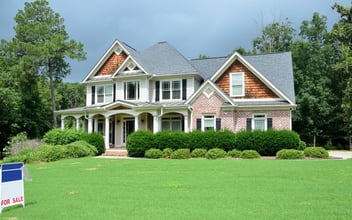Trees and Fences

Trees and fences seem to create more problems between neighbors than any other issues. We thought it might be helpful to answer some of the common questions concerning trees and fences
Who owns a tree?
The person who owns the land on which the trunk of the tree stands. If the trunk straddles a property line, both land owners can claim an ownership interest.
What right does a property owner have to trim a tree which belongs to a neighbor but has limbs or roots which overhang or grow onto an adjacent lot?
A property owner has the right to trim branches and roots which encroach onto her property from a tree belonging to a neighbor, but you must exercise caution when trimming a tree or its roots. The following general rules apply to trimming a tree:
- The tree can only be trimmed to the property line.
- There is no right to trespass onto a neighbor’s property to trim a tree unless the limbs threaten to cause immediate and irreparable harm.
- The tree cannot be cut down or otherwise destroyed to eliminate the problem. It can only be trimmed back.
- The expense of the trimming is borne by the party doing the trimming.
What rights does the owner of a tree have when the tree is damaged or destroyed by a neighbor?
If a neighbor goes too far and trims the tree further back than the property line or if a neighbor cuts down or otherwise damages a tree on adjacent property, the neighbor damaging the tree can be liable for damages. For instance, if a landowner applies a chemical on his property to kill the roots of a tree which encroach onto his property and the chemical seeps into the soil and kills the tree on the neighboring property, the landowner applying the chemical can be liable for damages.
Does it make any difference if a tree is dead or dying and creates an imminent danger to life or property?
Unsound trees which are a threat to neighboring property owners do not have the same protection as a sound, healthy tree. If the danger is immediate, the general rule is that an adjacent property owner can take reasonable action, including removal of the tree, to prevent damage to his property. There are few, if any, court cases in Texas recognizing this but we believe a landowner is justified in taking reasonable action to protect life or property.
If the limbs of a healthy tree overhang the roof of a neighbor’s property, is the owner of the tree under a duty to trim the tree back to protect the roof of the neighbor?
No, the tree owner does not have a duty to trim the tree. The adjacent landowner has the right to trim the tree back to the property line to protect his property and should exercise this right.
Is an adjoining landowner liable for damage to property caused by tree limbs or roots from a tree located on the adjoining landowner’s property?
At least one Texas court has said no, assuming the tree was healthy. A large tree located entirely on an adjoining lot grew into two large branches one of which overhung the house on the neighboring lot. A 90 mile per hour wind caused the overhanging portion of the tree to fall on the neighbor’s house severely damaging it. The owner of the damages house sued his neighbor for negligence in allowing the tree to overhang his house, alleging that the tree owner was negligent in allowing it to overhang the neighboring property and also alleging nuisance and trespass. The court dismissed the negligence allegation and said that trespass and nuisance required an intentional act by the neighbor. Since the neighbor did not intentionally cause the tree to overhang the neighbor’s house, the court held that the tree owner was not liable for damages.
Fences, or the lack of a fence, can also cause problems between neighbors. Rural and urban fence issues vary substantially. Since most of us now live in urban areas, I will limit this discussion to issues commonly faced by urban landowners related to boundary line fences.
A boundary line fence is a fence that is located on the property line between two properties and is used by both property owners. Texas does not have a specific statute or law dealing with boundary line fences. The principals stated below are generally applied to determine the rights and obligations of neighbors regarding boundary line fences.
Most fence disputes arise over one of three issues: (1) fence boundaries, (2) maintenance of existing fences, and (3) the replacement of an old fence.
Who owns a fence?
Unless the parties agree otherwise, a fence located on the boundary line between neighboring properties is owned by both property owners when both owners are using the fence. Neither may remove the fence without permission of the other owner.
Determining when a neighboring property owner is “using” a fence is critical. Generally, a property owner is deemed to be using a boundary fence when the neighbor’s entire yard is fenced on all sides. For example, if a neighbor has fenced only three sides of his property, he is not “using” the boundary fence to enclose his yard.
Who is responsible for maintaining a boundary fence?
The property owners who use the fence are responsible for maintaining it, unless the parties have agreed otherwise. The law places responsibility on both parties because both benefit from the fence. Consequently, when a fence needs repair, both property owners must share the cost.
Can neighbors enter into fence agreements?
If neighbors do not want to share ownership of a boundary fence, they can enter into an agreement stating other arrangements. For instance, two property owners could agree that a fence is owned by only one of them or that they will share ownership unequally. This is sometimes done with a wood privacy fence. The owner with the “smooth” side of the fence might agree to pay 60% of the cost with the other owner who has the less attractive side paying 40%.
In reality, if one owner puts up a fence, he usually considers it his fence, maintains it, and does not want his neighbor interfering in his business. When purchasing a residence, it is often difficult to impossible to determine who actually owns a fence and the respective duties and obligations of the adjoining property owners.
What should you do if your neighbor builds a fence on your property?
As soon as you become aware that the fence is on your property, ask your neighbor to stop building until you can both determine where the property line is located and where the fence should be constructed.



